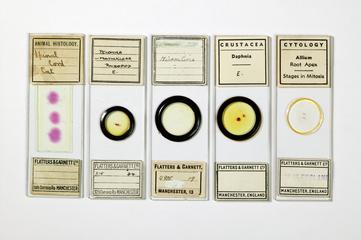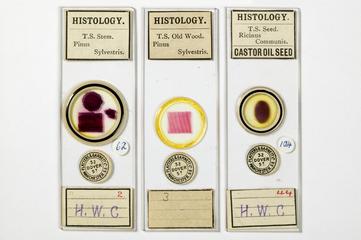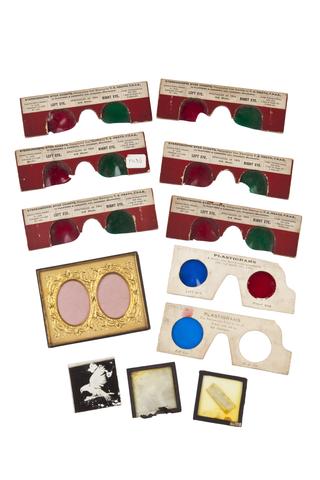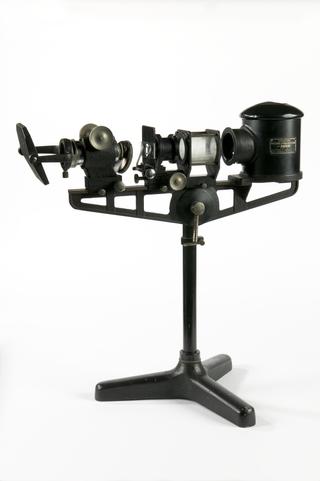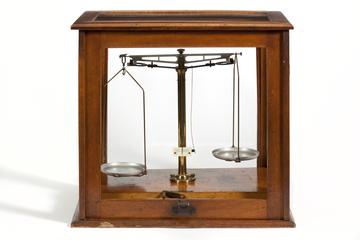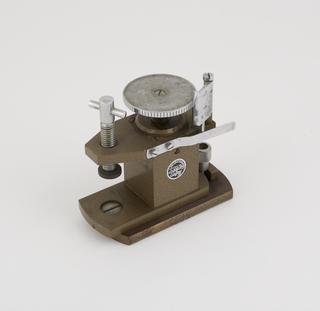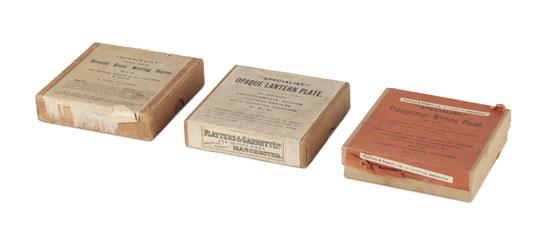
Flatters and Garnett Limited 1901 - 1967
- occupation:
- Microscope & accessory manufacturer
- Nationality:
- British
- born in:
- Manchester, Manchester urban district, Greater Manchester, England, United Kingdom
- Made:
- Manchester
Flatters & Garnett was a nationally important firm that supplied microscopical equipment and preparations for educational use. The Museum’s collections include a selection of microscopical apparatus made by the company.
Abraham Flatters, one of the joint founders of the company, was born in 1848 near Gainsborough in Lincolnshire. He came to Manchester and found employment at a dye works and, later, as a railway lamplighter for many years. Charles Garnett was born in 1843, near Warrington. He became apprenticed to a grocer there but, at the age of 21, emigrated to New Zealand. There, he became interested in natural history and made a collection of the ferns found on South Island. In 1873, he returned to Manchester and opened a restaurant in Cateaton Street.
Flatters developed an interest in natural history and, in 1886, attended a course of lectures on zoology given by Professor Milnes Marshall of Owens College. He also joined the Manchester Microscopical Society. Flatters set up a small business making lantern and microscope slides and microscopic preparations at his home at 16, Church Road, Longsight in 1895. Soon after, he became a lecturer in microscopy at the Municipal School of Technology, a post he held for 32 years. In 1897, Charles Garnett joined the Manchester Microscopical Society and met Flatters. By 1901, Flatters was having financial problems in his business and Garnett went into partnership with him. Garnett's son, John B. Garnett, a pharmaceutical chemist, also joined the firm. Flatters & Garnett Ltd opened a chemists shop at 46, Deansgate, displaying the microscope and lantern slides made by Flatters at Church Road.
Flatters was elected a Fellow of the Royal Microscopical Society and wrote several books for students, including Methods In Microscopical Research And Vegetable Histology. This was the first work of its kind to include coloured photomicrographs to illustrate research methods. By 1906, Flatters and Garnett Ltd employed a staff of 12. The company sold the chemists on Deansgate and moved to 32 Dover Street, near the University and opposite the Manchester High School for Girls. The firm hired and sold large numbers of lantern slides on all aspects of natural history.
In 1909, however, a serious rift developed between Flatters and the other directors. The Garnetts agreed to buy out his share and Flatters set up a business with some other members of the staff under the name of Flatters, Milbourne and McKechnie at premises on Church Road.
Flatters and Garnett Ltd moved in 1913 to larger premises at 309 Oxford Road, opposite the University. About a year later, the company developed Mersol, an immersion oil for use with high power microscope objectives which became very popular and sold well for many years.
Flatters & Garnett Ltd expanded its business steadily during the 1920s. The company increased the range of instruments it produced, including dissecting microscopes and the Precision microprojector. The company won a reputation for producing well-designed, reliable instruments and sold its products all over the world. In 1932, the firm acquired a large Victorian house on Wynnstay Grove in Fallowfield where it moved the microslide, specimen, photographic and chemical departments. Here the staff could have more space and less disturbance from noise and dirt than on Oxford Road. In 1950, the company introduced the Mikrops industrial projector. This replaced the microscope for routine examination in many laboratories.
Due to financial problems, the company went into liquidation in 1967.
